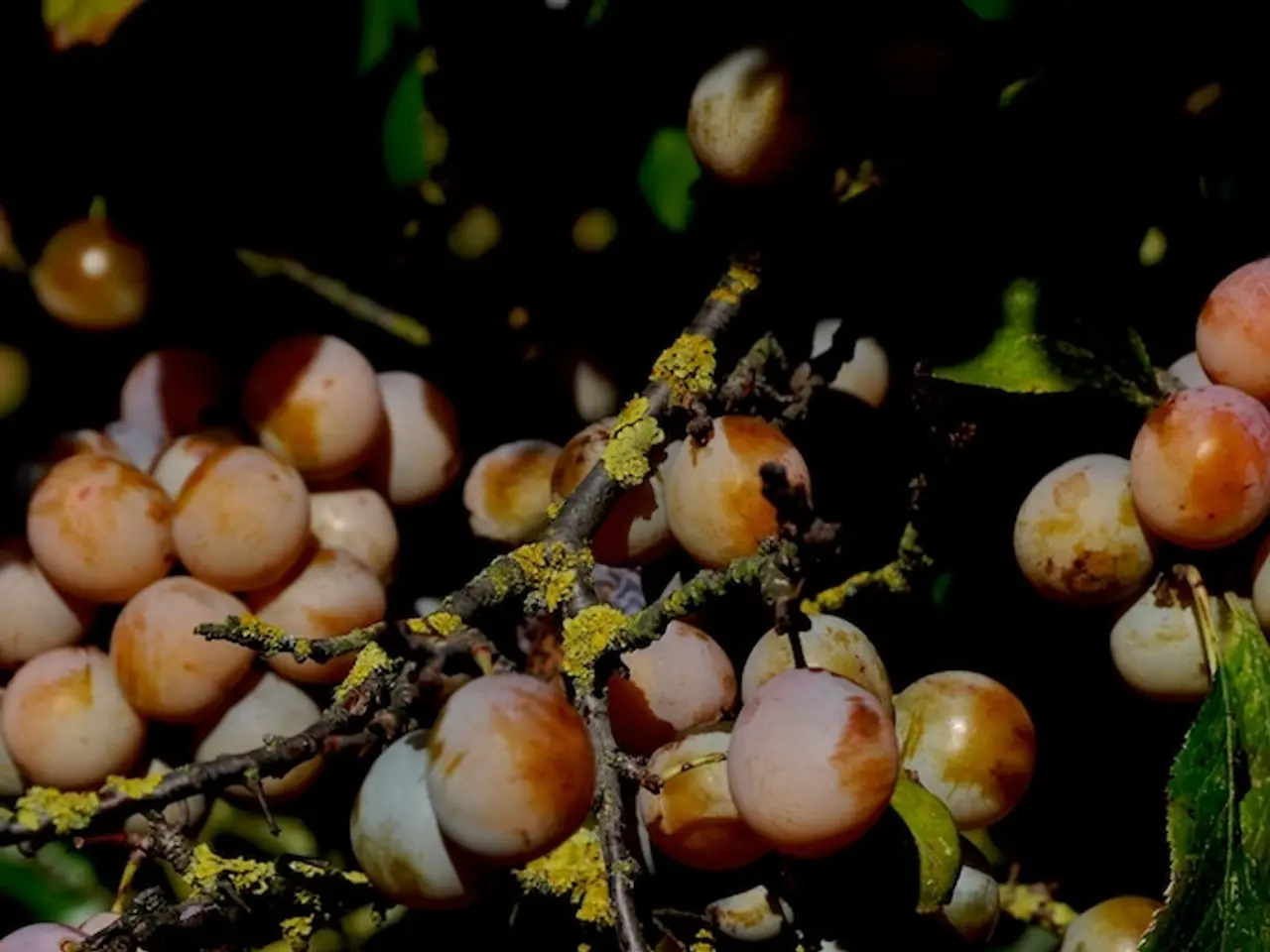Optimal Jalapeno Harvest: Expert Guidance on Harvesting Maturity
In the world of gardening, knowing when to pick your jalapeños can make a significant difference in their flavor and heat level. Here's a comprehensive guide to help you determine the ideal time for harvesting these popular chili peppers.
## General Guidelines for Harvesting Jalapeños
1. **Color and Striation**: Jalapeños typically start as green and may turn red as they fully ripen. The appearance of striations or "corking" (fine lines on the skin) can indicate maturity and slightly higher heat levels[1][4].
2. **Size and Firmness**: Green jalapeños should be firm, glossy, and about 3–4 inches long when harvested. Red jalapeños are usually slightly softer but still firm[3].
3. **Heat Level**: Harvest around the 40-day mark after fruiting for the hottest peppers. Pick earlier for milder flavor or later for a slightly sweeter taste[1].
## Specific Varieties and Traits
| **Variety** | **Heat Level (SHU)** | **Flavor Profile** | **Best Uses** | **Harvest Timing** | |-------------|---------------------|-------------------|---------------|-------------------| | **Early Jalapeño** | 2,500–5,000 | Classic heat, slightly grassy | Salsas, pickling | Harvest around 60 days for optimal flavor[5] | | **TAM Mild Jalapeño** | 1,000–1,500 | Very mild, retains flavor | Stuffing, poppers | Harvest when green and firm[3] | | **Mucho Nacho** | 4,000–6,000 | Hotter, bolder, slightly sweet | Grilling, stuffing | Harvest when red or when desired heat level is achieved[3] | | **Jalafuego** | 4,000–6,000 | Extra large, spicy | Sauces, drying | Allow to fully ripen for best flavor[3] | | **Orange Jalapeño** | 2,500–8,000 | Sweet, fruity, medium heat | Salsas, hot sauces | Harvest when orange for unique flavor[3] | | **Purple Jalapeño** | 2,500–8,000 | Earthy, classic heat | Pickling, fresh use | Harvest when deep purple or red[3] |
## Harvesting Tips for Optimal Flavor and Heat
- **Cooler Climates**: Varieties like **Jalapeno Early** are more suitable for cooler climates and can be harvested earlier, making them ideal for shorter growing seasons[5]. - **Processing**: Removing seeds or canning can reduce heat if desired[1]. - **Culinary Use**: Different varieties are suited for various dishes, such as pickling, grilling, or making chipotle peppers[3][5].
## Additional Tips for Jalapeño Harvesting
- Ensuring good air circulation around the plants helps prevent diseases. - Row covers can be used to protect jalapeno plants from frost. - Regularly removing yellowing or dead leaves reduces the risk of disease spread. - Aphids, cucumber beetles, and pepper hornworms are common pests that target jalapenos. - Picking jalapenos with scissors or sharp pruning shears leaves a small stem attached, avoiding damage to the plant. - Freezing jalapenos preserves their heat and flavor for several months.
By following these guidelines, you can ensure that your jalapeños are harvested at the perfect time for your desired flavor and heat level. Happy gardening!
[1] Cornell University Cooperative Extension. (n.d.). Jalapeño Pepper. Retrieved March 10, 2023, from [2] North Carolina State University. (n.d.). Jalapeño Pepper. Retrieved March 10, 2023, from
- For those who enjoy cooking and food-and-drink, the right timing for harvesting jalapeños can significantly impact their flavor and heat levels, making it an essential part of your lifestyle and home-and-garden activities.
- Following the general guidelines for harvesting jalapeños, consider factors such as color, size, and heat level to ensure you reap the benefits of these popular chili peppers. Don't forget to also take note of specific variety traits for optimal results.
- Gardening enthusiasts will appreciate the wide range of recipes that jalapeños can bring to the table, from classic salsas and pickled peppers to spicy hot sauces and unique flavor profiles like the fruity orange jalapeño or the earthy purple jalapeño. Happy cooking and happy gardening!





